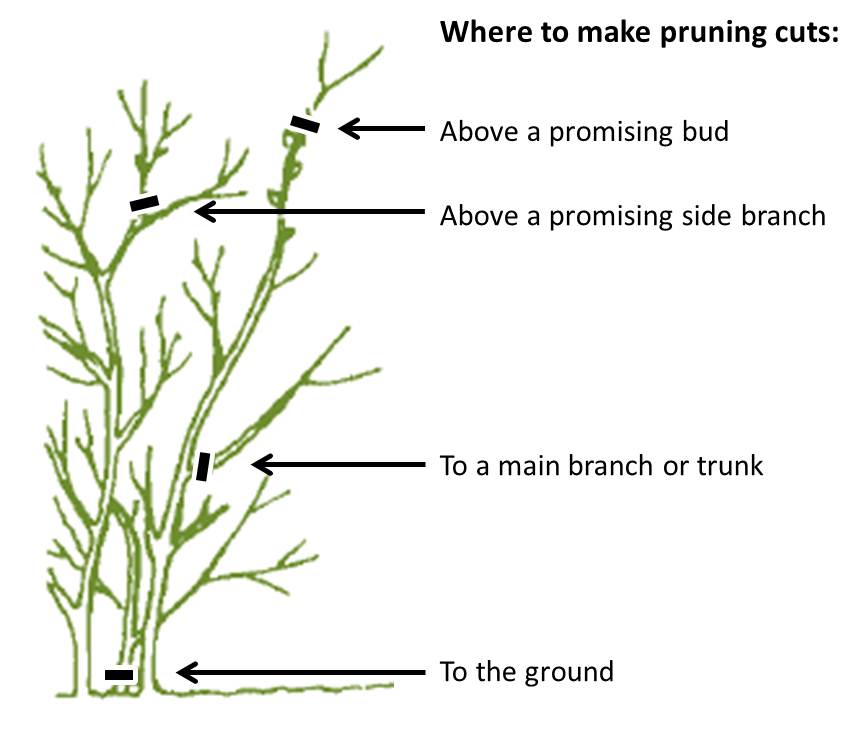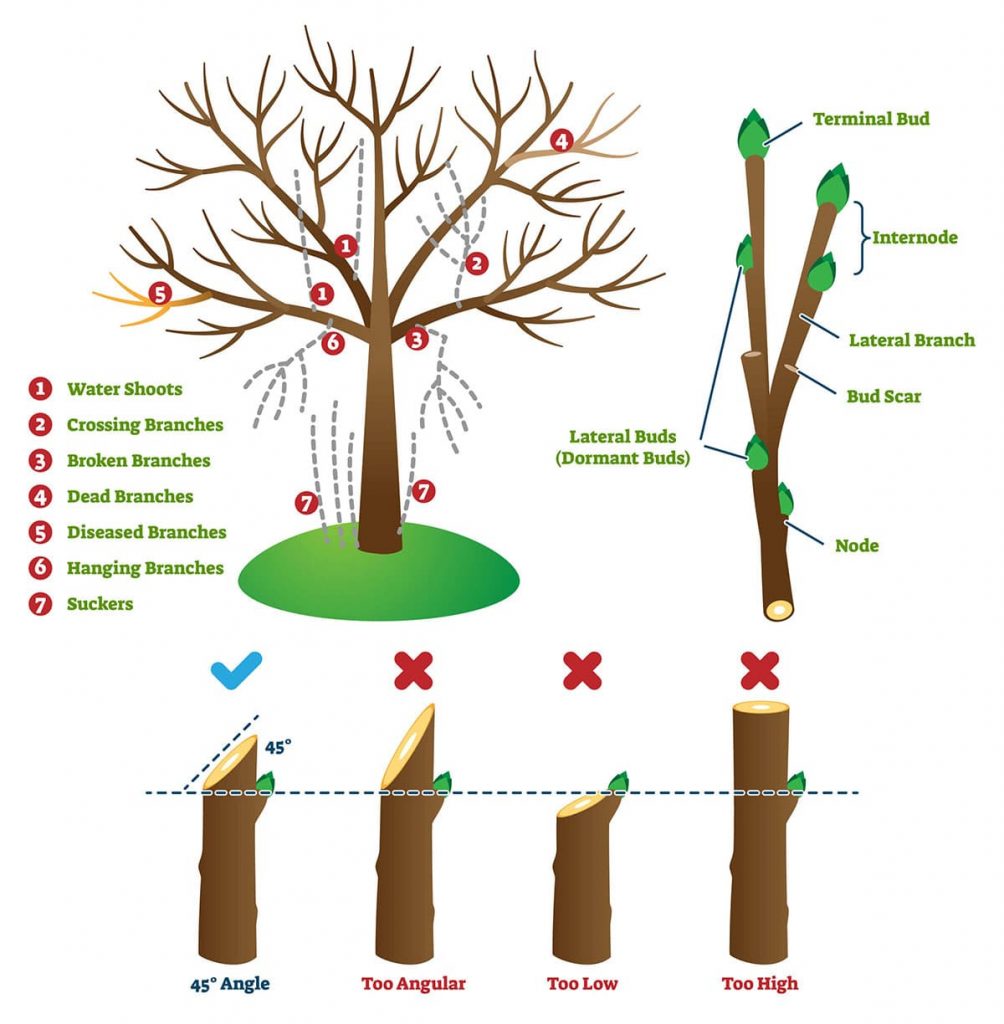How to Prune Plants for Better Growth: A Comprehensive Gardening Guide

Gardening is an art, and pruning is one of its most essential techniques. Just as a sculptor shapes a block of marble into a masterpiece, a gardener can transform a plant into a thriving, healthy specimen through careful pruning. But where do you start? How do you know which branches to cut and which to leave? In this comprehensive guide, we'll explore the world of plant pruning, providing you with tips and techniques to promote plant growth and cultivate a lush, vibrant garden.
Understanding Plant Pruning
Before we dive into the specifics of how to prune plants for better growth, let's understand what pruning is and why it's crucial for your plants. Pruning is the selective removal of parts of a plant, such as branches, buds, or roots. This process helps control the plant's growth, shape, and productivity.
Why Prune Your Plants?
Pruning isn't just about aesthetics; it's about the plant's health and productivity. Here are a few reasons why pruning is essential:
- Promote Plant Growth: Pruning encourages new growth and helps plants maintain a compact, attractive shape.
- Improve Plant Health: By removing dead, diseased, or damaged branches, you prevent the spread of pests and diseases.
- Increase Yield: Pruning can stimulate the growth of flowers and fruits, leading to a more abundant harvest.
- Control Size and Shape: Regular pruning helps maintain the plant's size and shape, making it easier to manage your garden space.
Essential Pruning Techniques
Now that we understand the importance of pruning let's explore some essential pruning techniques.
Pinching
Pinching is a simple pruning technique that involves removing the growing tip of a plant by pinching it off with your fingers. This technique encourages bushier growth and is ideal for herbs, annuals, and perennials.
Heading
Heading involves cutting back a branch to a bud or lateral branch. This technique stimulates new growth and is often used to shape shrubs and hedges.
Thinning
Thinning involves removing entire branches back to their point of origin. This technique opens up the plant's canopy, allowing more light and air to reach the inner branches. Thinning is ideal for trees and shrubs with dense growth.
Plant Pruning Tips for Better Growth
When to Prune
Timing is crucial when it comes to pruning. The best time to prune depends on the plant species and your pruning goals. Generally, the best time to prune is in late winter or early spring, just before new growth begins. However, some plants, like spring-flowering shrubs, should be pruned immediately after they bloom.
What Tools to Use
Using the right tools is essential for effective pruning. Here are some must-have pruning tools:
- Pruning Shears: Also known as secateurs, these are ideal for cutting branches up to 1 inch in diameter.
- Loppers: These long-handled tools are perfect for cutting branches up to 2 inches in diameter.
- Pruning Saw: For larger branches, a pruning saw is the best tool for the job.
How to Make Proper Cuts
Making proper cuts is vital for the plant's health and regrowth. Always cut at a 45-degree angle, just above a bud or lateral branch. Avoid leaving a stub, as this can lead to disease and pest problems.
Pruning Different Types of Plants
Different plants require different pruning techniques. Here's a quick guide to pruning various plant types:
Pruning Trees
When pruning trees, focus on removing dead, diseased, or damaged branches. Also, remove any branches that cross or rub against each other. Make sure to cut back to a lateral branch or bud, and avoid leaving stubs.
Pruning Shrubs
The pruning technique for shrubs depends on their growth habit. For deciduous shrubs, prune in late winter or early spring. For evergreen shrubs, prune in early spring or after they have finished blooming.
Pruning Perennials
Most perennials benefit from a good prune in late winter or early spring. Remove any dead or damaged foliage, and cut back the plant to encourage new growth. Some perennials, like lavender, should be pruned after they bloom to promote a second flush of flowers.

Common Pruning Mistakes to Avoid
Even the most experienced gardeners make pruning mistakes. Here are some common pitfalls to avoid:
- Over-pruning: Removing too much of the plant can stress it and hinder its growth. As a general rule, never remove more than one-third of the plant's foliage at a time.
- Using Dull Tools: Dull tools can cause ragged cuts, which can lead to disease and pest problems. Always use sharp, clean tools.
- Pruning at the Wrong Time: Pruning at the wrong time can remove potential flowers or fruits and weaken the plant. Always research the best time to prune your specific plants.
Conclusion: Embrace the Art of Pruning
Pruning is an essential part of gardening that can transform your plants and promote better growth. By understanding the basics of pruning, using the right techniques, and avoiding common mistakes, you can cultivate a garden full of healthy, vibrant plants.
So, grab your pruning shears and get started! Remember, pruning is an ongoing process, and it's okay to make mistakes. With practice, you'll become a pruning pro, and your garden will thank you for it.
Happy pruning!
FAQs
What is the best time to prune plants? The best time to prune depends on the plant species and your pruning goals. Generally, late winter or early spring is ideal, but some plants should be pruned immediately after they bloom.
What tools do I need for pruning? Essential pruning tools include pruning shears, loppers, and a pruning saw. Always use sharp, clean tools for the best results.
How much of a plant should I prune at once? As a general rule, never remove more than one-third of the plant's foliage at a time. Over-pruning can stress the plant and hinder its growth.
What is the difference between heading and thinning? Heading involves cutting back a branch to a bud or lateral branch, while thinning involves removing entire branches back to their point of origin.
How do I know if I've pruned too much? If your plant looks bare or starts to show signs of stress, such as wilting or yellowing leaves, you may have pruned too much. Give the plant time to recover and adjust your pruning technique in the future.

For more detailed information on pruning specific plants, check out these resources:
These resources provide in-depth guides and expert advice on plant pruning techniques.
0 Response to "How to Prune Plants for Better Growth: A Comprehensive Gardening Guide"
Post a Comment